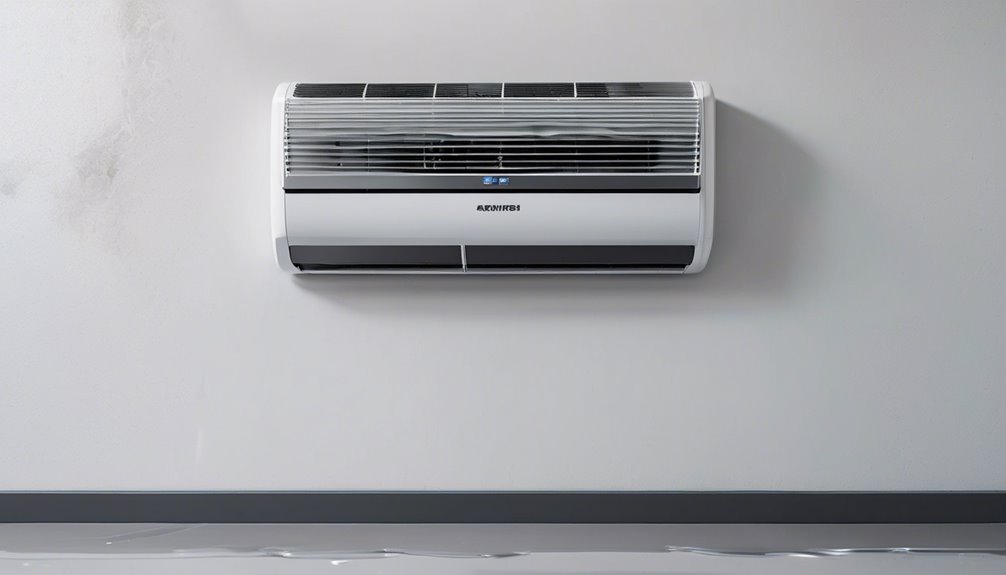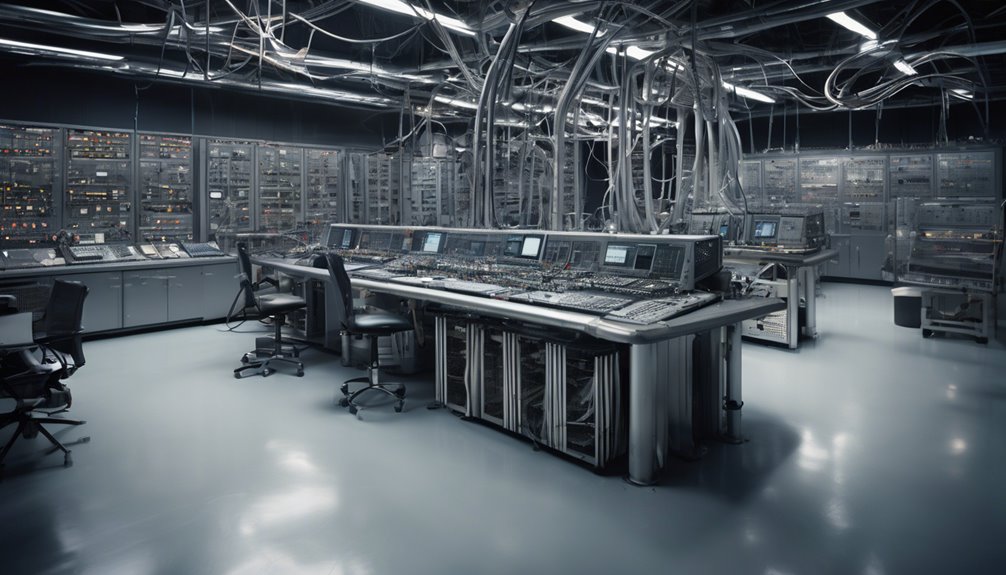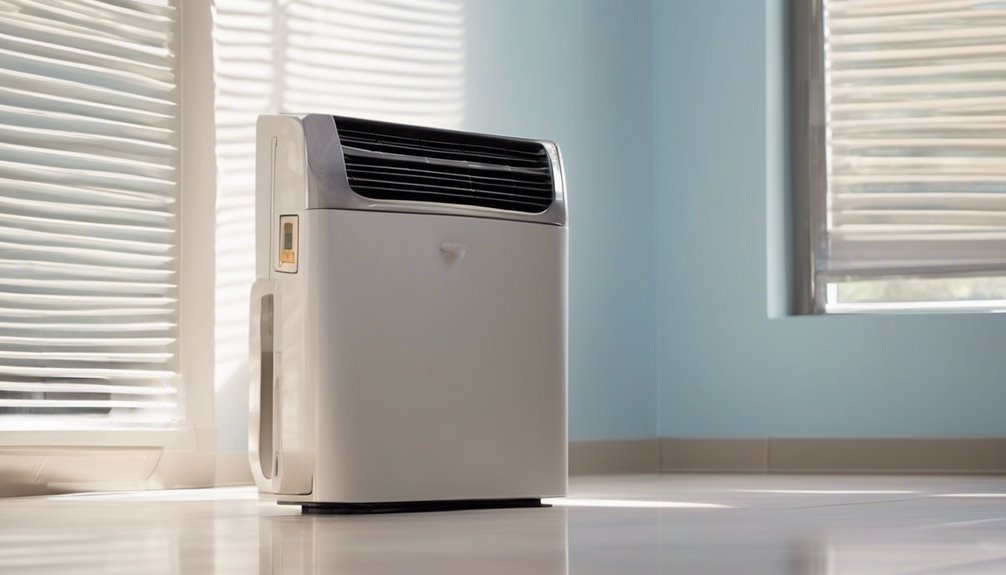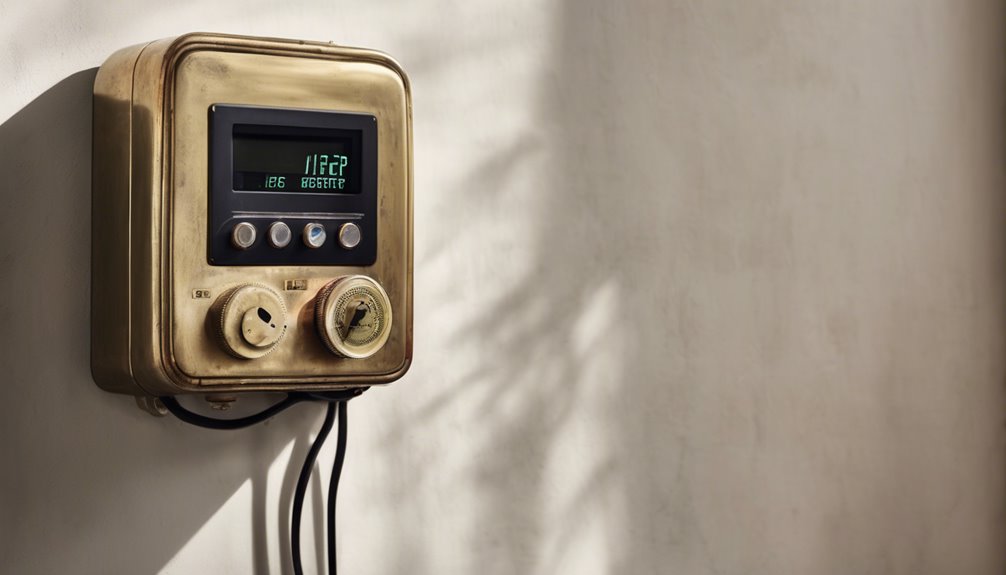To stop AC water leakage from your wall unit, identify the source of the leak by checking the drain pan, coils, and surrounding areas for signs of water damage or corrosion. Ensure the condensate drain isn't clogged and the drainage pipe has the correct slope. Clean the coils and air filter regularly, and inspect the AC unit's seals and gaskets for any damage. If the issue persists, consider upgrading to a condensate pump. By taking these steps, you'll be well on your way to resolving the leak and preventing future issues – and there's more to learn to ensure your AC unit runs smoothly and efficiently.
Key Takeaways
- Check the AC's drain pan and coils for blockages, cracks, or corrosion, and inspect surrounding areas for water damage or rust.
- Ensure the condensate drain is clean and free of debris, and verify it has the correct slope to prevent water accumulation and leakage.
- Regularly clean the coils and air filter to ensure proper air circulation and prevent water leakage, and replace the air filter as needed.
- Inspect the AC unit's installation and elevation to ensure it is properly sloped and elevated to prevent water leakage.
- Consider upgrading to a condensate pump if water leakage issues persist, and choose a pump type that suits the AC unit's condensate output and budget.
Identify the Source of the Leak
Where's the water coming from?
You're probably wondering how water is seeping from your wall unit air conditioner.
To identify the source of the leak, you'll need to investigate further.
Investigate further to uncover the root of the issue and pinpoint the source of the leak.
Start by checking the AC's drain pan for blockages or cracks.
If it's clear, move on to the coils and surrounding areas.
Use leak detection tools, such as a moisture meter or thermographic camera, to detect moisture measurement and pinpoint the leak's location.
Check for signs of water damage, rust, or corrosion on nearby components.
Inspect the Condensate Drain
Now that you've ruled out the drain pan and coils as the source of the leak, it's time to shift your attention to the condensate drain.
This component is responsible for collecting and disposing of condensate water, so any blockages or issues here can cause water to accumulate and leak out.
Check the condensate drain for signs of blockages, such as dirt, dust, or debris.
Make sure it's not clogged, as this can lead to condensate damage and drainage issues.
If you find any blockages, clean them out thoroughly to ensure proper drainage.
A clean condensate drain is essential to preventing water leakage from your wall unit AC.
Check the Drainage Pipe
You'll want to check the drainage pipe for blockages, which can cause water to back up and leak.
Make sure to inspect the pipe filter, as a dirty one can also lead to clogs and water accumulation.
Additionally, verify that the condensate pipe has the correct slope to ensure proper water flow and prevent leakage.
Pipe Blockage Causes
How often have you found yourself dealing with a clogged air conditioner drainage pipe, only to wonder what's causing the blockage? There are several reasons why your pipe might be clogged, and understanding these causes is key to preventing AC water leakage.
| Causes of Blockage | Description |
|---|---|
| Pipe corrosion | Corrosion can narrow the pipe, reducing water flow and causing blockages. |
| Clogged vents | Vents that are clogged with debris or dust can prevent water from draining properly. |
| Debris accumulation | Leaves, twigs, and other debris can accumulate in the pipe and cause blockages. |
| Incorrect installation | Improperly installed pipes can lead to kinks, bends, or other obstructions that cause blockages. |
| Mineral buildup | Mineral deposits can form inside the pipe, reducing its diameter and causing blockages. |
Dirty Pipe Filter
A dirty pipe filter can be another major contributor to AC water leakage.
You might notice dirty filter symptoms like reduced airflow, increased energy bills, or water droplets forming around the unit. If you don't clean the filter regularly, it can clog the drainage pipe, causing water to leak out.
To avoid this, check and clean the filter every 1-2 months, depending on usage and environmental factors. You can remove dust and debris by gently tapping the filter or vacuuming it. Replace the filter if it's damaged or beyond cleaning.
Condensate Pipe Slope
One common oversight that can lead to AC water leakage is an improperly sloped condensate pipe.
You should check the drainage pipe to ensure it's installed at a slight incline, allowing water to flow freely to the drain pan. Make sure the pipe materials, such as PVC or copper, are suitable for the job and can withstand condensate water's corrosive properties.
Also, inspect the insulation methods used around the pipe, as inadequate or damaged insulation can cause water to collect and leak. A well-sloped and insulated condensate pipe is crucial to preventing water accumulation and subsequent leakage.
Ensure Proper Slope and Elevation
You need to ensure your AC unit is installed on a properly sloped and elevated surface to prevent water leakage.
During wall installation, it's crucial to consider the drainage design to allow condensate water to flow out freely. If the unit isn't installed at the correct angle, water can accumulate and seep into the walls, causing leakage.
Make sure the surface is level and slightly inclined to facilitate smooth water flow. A well-designed drainage system will help to redirect water away from the walls and prevent leakage.
Clean the Coils and Air Filter
You'll want to tackle dust and debris accumulation on your AC's coils and air filter, as it's a common culprit behind water leakage.
Dust and Debris Removal
Dust and debris accumulation is a silent culprit behind AC water leakage, as it blocks airflow and increases pressure within the system.
When dust builds up, it reduces air circulation, causing your AC to work harder and leading to water leakage. You need to remove dust and debris regularly to ensure proper air circulation.
Start by turning off your AC unit and removing the filter. Gently tap the filter to remove loose dust and debris. Then, use a soft brush or vacuum cleaner to remove any remaining dust and debris from the coils and surrounding area.
Coil Cleaning Methods
Cleaning the coils and air filter is a crucial step in preventing AC water leakage, as dirty coils can increase pressure and reduce airflow, leading to condensate overflow.
You'll want to clean your coils regularly as part of your coil maintenance routine. Start by turning off your AC unit and removing the grille or cover to access the coils.
Use a soft-bristled brush or a specialized coil cleaning brush to gently sweep away dirt and debris. If you notice frosted coils, use a mixture of water and mild detergent to wipe them clean.
Be sure to rinse thoroughly to prevent any soap residue from affecting airflow.
Filter Replacement Tips
The air filter plays a crucial role in preventing AC water leakage, as a clogged filter can increase pressure and reduce airflow, leading to condensate overflow.
You should replace your air filter every 1-3 months, depending on usage and manufacturer's instructions. When replacing the filter, make sure it's the correct size and type for your unit.
A dirty filter can reduce airflow and cause the AC to work harder, leading to increased energy bills and potential water leakage. Regular filter maintenance is essential to ensure your AC unit runs efficiently and effectively.
Inspect the AC Unit's Seals and Gaskets
Your air conditioner's seals and gaskets play a crucial role in keeping water from seeping out, so it's essential to inspect them regularly.
During your gasket inspection, look for signs of wear and tear, such as cracks, dryness, or brittleness.
Seal damage can cause water to leak from your AC unit, so it's crucial to address any issues promptly.
Prompt AC unit repairs to prevent water leaks and costly damage from seal damage.
Check the following areas:
- Gasket condition: Inspect the gaskets for signs of deterioration or damage.
- Seal tightness: Ensure all seals are tightly closed and not loose.
- Gasket alignment: Verify that the gaskets are properly aligned with the AC unit's components.
- Gasket cleanliness: Clean the gaskets and surrounding areas to prevent debris buildup.
Check the Water Pan and Drainage System
Water accumulation in the AC unit's water pan can lead to leakage if not properly drained. To avoid water damage, ensure the pan is clean and free of debris. Check the drainage system for blockages or kinks in the hose. Make sure it's properly connected to the pan and directed towards a drain.
| Task | Frequency |
|---|---|
| Clean the water pan | Every 3 months |
| Inspect the drainage system | Every 6 months |
| Check for kinks or blockages | Every month |
Regular pan maintenance can prevent water leakage and damage to your walls and floors. Remember to check your AC unit's manual for specific maintenance instructions, as different models may have varying requirements.
Consider Upgrading to a Condensate Pump
If you're still experiencing water leakage issues despite regular pan maintenance, it's time to consider upgrading to a condensate pump.
This device can efficiently collect and remove condensate water from your AC unit, eliminating the risk of leakage. You'll have several pump types to choose from, including centrifugal, submersible, and float-switch pumps.
When it comes to installation, you can opt for a gravity-fed system, a condensate pump with a built-in float switch, or a wired system that connects to your AC unit.
- Pump type: Choose a pump that suits your AC unit's condensate output and your budget.
- Installation method: Select an installation method that fits your DIY skills and the pump type you've chosen.
- Power supply: Ensure the pump is compatible with your AC unit's power supply.
- Drainage route: Plan the drainage route to ensure the pump can efficiently remove condensate water.
Regular Maintenance and Prevention
Regular maintenance and prevention are crucial to stopping AC water leakage.
You'll want to ensure your air conditioning unit is well-maintained to prevent water leakage, especially in humid climates where moisture buildup is common.
Check and clean the air filter regularly to improve air quality and reduce condensation.
Make sure the condensate drainage tube is clear of debris and kinks, allowing water to flow freely.
Inspect the unit's drainage pan and drain line for blockages or damage.
Frequently Asked Questions
Can I Use a Dehumidifier to Reduce AC Water Leakage?
You can use a dehumidifier to reduce moisture accumulation, but it won't directly stop AC water leakage. Instead, consider installing moisture sensors to monitor humidity levels, and adjust your AC's drainage system to prevent water buildup.
Will Turning off the AC Stop the Water Leakage Immediately?
When you turn off the AC, you'll stop the cooling process, but it won't immediately halt water leakage; the AC's drainage system will still need time to clear out excess moisture before the leakage fully stops.
Can I Fix the Leak Myself Without Professional Help?
You can try fixing the leak yourself with a DIY toolkit and your AC's manual as a guide, but be cautious, as improper repairs might worsen the issue, and it's still recommended to consult a pro if you're unsure.
How Often Should I Inspect My AC Unit for Water Leaks?
You should inspect your AC unit regularly, ideally during seasonal checks, to catch potential water leaks before they become major issues, and make regular maintenance a habit to prolong its lifespan and prevent costly repairs.
Will a New AC Unit Eliminate the Risk of Water Leakage?
You're wondering if a new AC unit will eliminate water leakage risks. While it can help, it's not a guarantee, as installation quality and unit design play a significant role in preventing leaks, so choose a reliable brand and experienced installer.
Conclusion
You've identified and addressed the source of the AC water leakage from your wall unit. By inspecting the condensate drain, checking the drainage pipe, and ensuring proper slope and elevation, you've taken the necessary steps to prevent future leaks. Regular maintenance, including cleaning the coils and air filter, and inspecting seals and gaskets, will help keep your AC unit running smoothly and leak-free.



